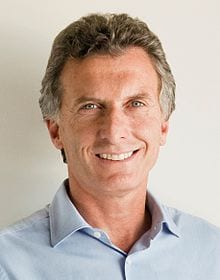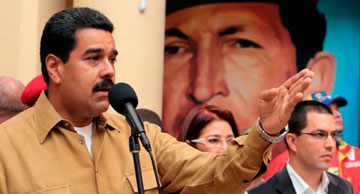State Centralized Populism is Not a Left-Wing Phenomenon
By Pedro Campos

HAVANA TIMES — The Argentinean opposition has just won the elections against the populist, Peronista administration. The broadcaster TeleSur, which identifies with state-centralized populist governments, some of which define themselves as socialist (such as Cuba, Venezuela and Ecuador), is announcing that the “right has triumphed over the left” in Argentina.
How much to the left is statist populism, really? Let’s have a look.
In truth, Argentina and all these other countries are dominated by capitalist production models, where the wage exploitation of workers prevails, and merely show a generalized tendency to have the State participate more regularly in the administration of economic policies (and directly in the management of many companies). These governments declare they are against “privatization” and in favor of “statization,” but wage labor continues to be exploited under both.
These processes, which they call “nationalizations,” generally involving large and efficient productive industries, place the more important, better paid positions within these companies in the hands of the State bureaucracy, encouraging corruption.
These governments are guided by the neo-social-democratic philosophy maintaining that the central bureaucracy, which directly or indirectly controls the means of production, ought to manage these resources to distribute wellbeing to the poor and dispossessed. It is not the workers themselves, or the municipalities and communities, but the State, that ought to be responsible for this, through taxes – not only on big capital but the middle classes and workers themselves.
These populist policies have managed to broaden public health and education services and, generally speaking, reduce extreme poverty and hunger, but their main objective is to secure support for the party in power and its plans of controlling State powers indefinitely.
In Latin America, there has always existed a tendency to identify the left with a greater degree of involvement by a paternalistic State. We’ve seen three major paradigms of these kinds of governments: the PRI in Mexico, Peron in Argentina and Fidel Castro in Cuba. The latter wedded socialism with state centralization in the economy and politics when the left is essentially characterized by its support of democracy and the people’s control over politics and the economy.

There have also been statist and populist dictators who did not identify with the left. Peron’s government had a history of relations with fascism that cannot be forgotten.
This tendency of the Latin American “left” to look for the solution to all problems in State (rather than popular) control has in fact nothing to do with the left or authentic democracy, nor with Marx or the essential ideas of genuine socialism, which is based on community and self-management.
History has shown that the stronger the wage-exploitative State, the weaker civil society, democratic mechanisms and economic freedom, making it harder for workers to shed the yoke of salaried exploitation.
Supporters of the State model have always sought to “control” and manage economic laws in search of a kind of obscene egalitarianism for those below, unaware that such laws exist independent of our wishes and express themselves in different forms when we try and repress them.
Is it at all revolutionary or left-wing to allow castes of bureaucrats to handle huge sums of money to develop populist policies, entrench themselves in power and ruin the economy, as the most radical populist-statist model – Cuba’s – has done?
According to the statist “left,” the liberalization of economic norms and the market has only served the capitalists, because they identify capitalism with the market, the rich and private property and not with the way in which labor is exploited. This way of thinking neglects the fact that economic and commercial freedom is the natural environment that forms of production free from capitalist exploitation (the strictly socialist, self-managed forms of production, including cooperatives, mutual unions, autonomous and other forms of labor) need in order to develop within capitalism itself.
Without economic freedom, strictly socialist forms of free, associated or individual labor cannot develop. Statists, who want the State to exploit workers through wage labor, have been the chief obstacle to the development of free forms of production.

Instead of proclaiming the abolition of salaried labor, as Marx favored, they have sanctified and consecrated it, under the State. This is what happened in all “socialist” countries and what has happened in Cuba. By contrast, they have outlawed free, associated or individual labor.
Can a policy be considered left-wing that inhibits and opposes the development of cooperative forms of production and encourages the establishment of a “dictatorship” (allegedly of the proletariat) that only favors the interests of party elites in power?
Can a centralized form of government that bars those below from making and executing decisions, such as managing revenues locally or solving problems through community effort, and seeks to control everything through a central bureaucracy, be considered left-wing?
Can a government be considered left-wing that controls a country’s resources and is opposed to allowing workers to decide how to incentivize labor, where to invest, how much to save and where to sell and purchase products.
The serious problem faced by this so-called left in Latin America is having identified with the labor movement and statist philosophies and not with direct democracy and the direct economic empowerment of citizens, though their management of property. It is a side-effect of Stalinism and Fidelismo -as in Castroism-, (there is also a similar form of “Fidelismo,” that of Fidel Velazquez, labor leader under Mexico’s PRI party), seeing revolution and socialism, in the dictatorship of the working class exploited by the State. What a supreme contradiction!
According to Marxist-Stalinist doxa and its variants, the opposite of private property – considered the root of all evil – is State property, hence this arrogant, revolutionary and even “socialist” statism they tout, which has seeped into the very marrow of many Latin Americans.
The defeat of Peronismo in Argentina is seen by some analysts as the beginning of the decline of Latin American populist statism, presented as a left-wing or even socialist form of government (spearheaded today by Venezuela, whose government faces difficult elections in the coming days, precisely because of the centralized and clumsy management of the country’s immense resources).
This vulgar, “left-wing” populist statism in Latin America, which has never truly encouraged the integration of those below, does not condemn international terrorism, the lack of democracy in Cuba or the repression of the opposition there, the corruption of populist-statist governments or the repression of Cuban émigrés by the Nicaraguan government of Daniel Ortega, has been dealt a heavy blow in Argentina and will seek to avoid a similar blow in Venezuela in December.
Let one thing be clear, though: there is a different, democratic, libertarian and communitarian left in Latin America that seeks to empower the people from the grassroots without impositions, one that, even though it was once identified as a “left-wing” current, today has absolutely nothing to do with the left.





